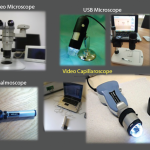In general, the investigators found no correlation between nailfold videocapillaroscopy abnormalities in inflammatory myopathies and clinical manifestations. However, they did find a higher frequency of giant capillaries in patients with Raynaud’s phenomenon. The frequency of ramified capillaries, tortuosities, hemorrhages or thrombosis was not different between subgroups.
Lara C. Pullen, PhD, is a medical writer based in the Chicago area.
ad goes here:advert-1
ADVERTISEMENT
SCROLL TO CONTINUE
Reference
- Soubrier C, Seguier J, Di Costanzo MP, et al. Nailfold videocapillaroscopy alterations in dermatomyositis, antisynthetase syndrome, overlap myositis and immune-mediated necrotizing myopathy. Clin Rheumatol. 2019 Dec;38(12):3451–3458. Epub 2019 Aug 22.


